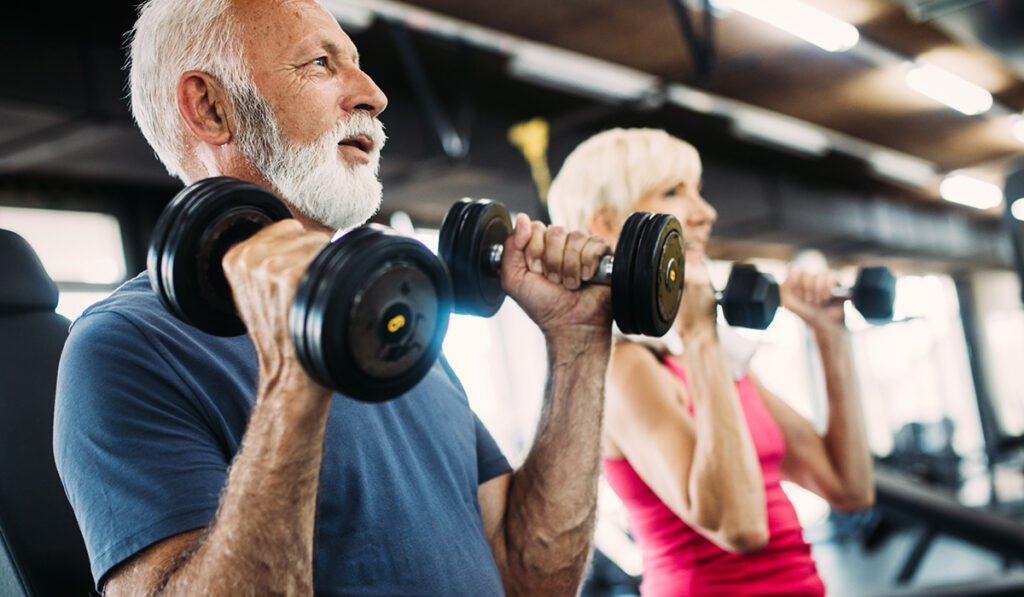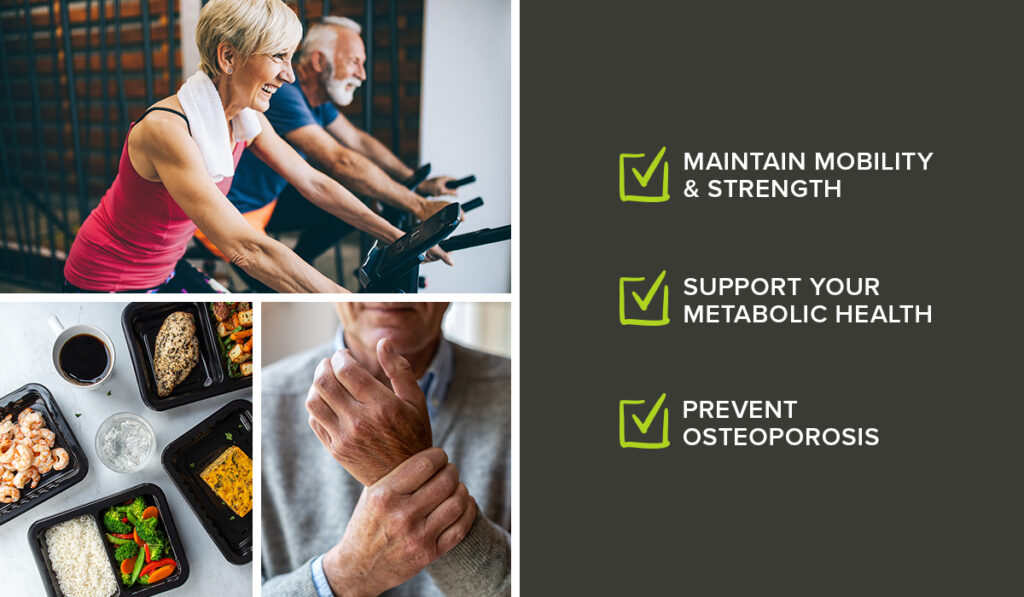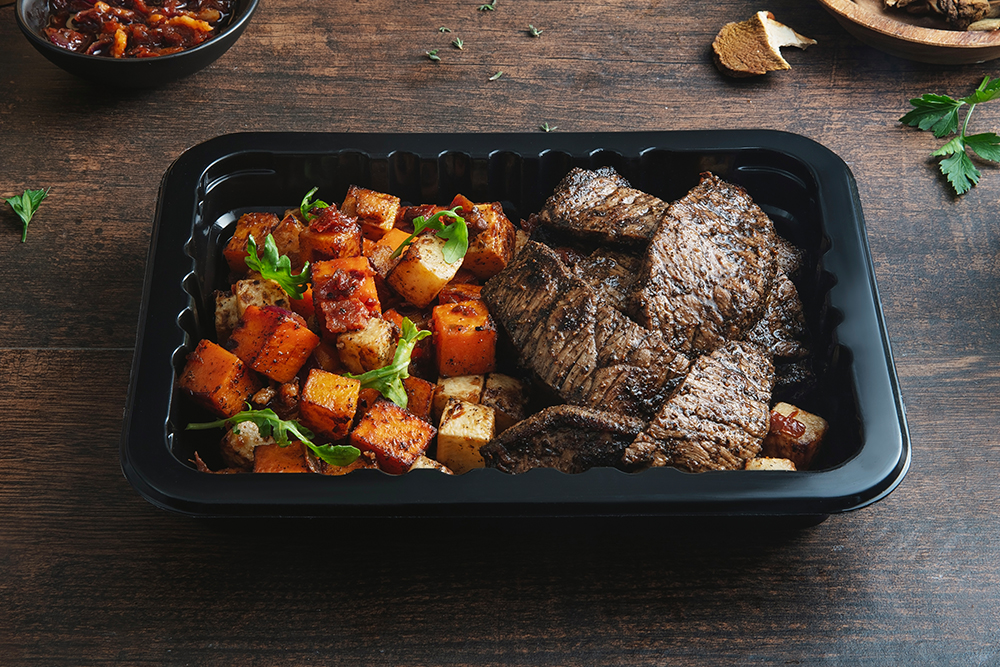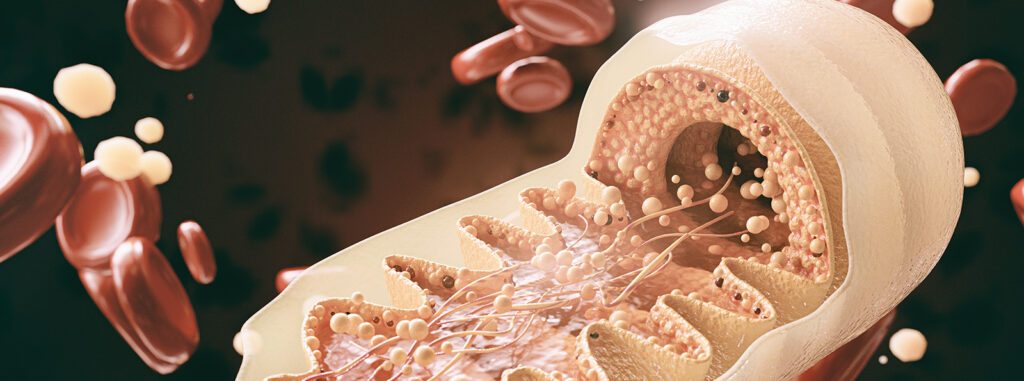More and more people are taking a good, hard look at their health and longevity. Many are looking for anti-aging strategies that will allow them to maintain or increase muscle mass and longevity as they continue taking trips around the sun.
The unfortunate part is that there is no fountain of youth; therefore, we all need to take better care of our health so that we can age gracefully. Those who take care of their bodies tend to hold onto their muscle mass and longevity long into their 60s, 70s, and beyond.
In this article, we will take a deeper dive into the importance of preserving your muscle mass and longevity, as well as some anti-aging strategies you can implement into your daily routine.
Disclaimer: This article is for informational purposes only and is not meant to treat or diagnose any condition. It is recommended that you speak with your doctor before starting any exercise program or making changes to your current nutrition regimen.

Why Do You Lose Muscle Mass with Age?
Other than paying taxes, the only other thing we can count on every year is that we’re going to get older. The unfortunate part about that is once we reach a certain age, our hormones tend to shift.
Once men reach around the age of 30, they can expect to experience anywhere from a 1-2% drop in testosterone levels. And while women are known for having higher estrogen levels than men, they still produce a small amount of testosterone. For them, around the age of 45 is when they will typically experience their own drop in testosterone levels.
As testosterone levels drop for both men and women, there is a rise in estrogen levels. When testosterone decreases with age, sarcopenia tends to set in where changes in body composition happen and muscle mass begins to decrease and body fat increases.
Furthermore, as testosterone decreases, so do strength levels, which can also cause a loss in muscle mass due to the muscle fibers being unable to progressively overload and either maintain or increase their size and strength. This all creates a domino effect.
The Negative Aspects of Losing Muscle Mass
The correlation between muscle mass and longevity is pretty apparent. If you allow sarcopenia to set in and you don’t leverage any anti-aging strategies to maintain muscle mass, you may experience some of the negative aspects below:
| Decrease in strength | Increase in body fat |
| Decrease in metabolic rate | Inability to maintain independence & mobility |
| Daily tasks become more difficult | Lower bone density |
| Higher likelihood of breaks & fractures after a fall | Increase the risk of insulin resistance |
| Compromised longevity | Saggy & loose skin |
3 Benefits of Maintaining or Increasing Muscle Mass with Age

There isn’t a secret to anti-aging strategies — you simply need to put in the work and be consistent with the process. Those who make their health a priority can reap the benefits mentioned below:
1. Maintain Mobility & Strength
Your ability to maintain muscle mass over the long term, even while you age, can help you retain your independence as you get into your golden years and can allow you to keep your strength and mobility.
2. Support Your Metabolic Health
Maintaining muscle mass can drastically help improve your metabolic health and prevent you from adding unwanted body fat with age.
3. Prevent Osteoporosis
With age, the risk of developing osteoporosis becomes a concern. One of the best anti-aging strategies to combat this is maintaining your muscle mass and supporting optimal bone health and density.
5 Ways to Use Nutrition & Exercise to Maintain Muscle Mass & Longevity in Middle Age & Older Populations

Maintaining or increasing muscle mass and longevity doesn’t need to be over-complicated. Below are a handful of ways to use nutrition and exercise to improve or maintain muscle mass and longevity as you age.
1. Resistance Training
It is recommended that you engage in regular resistance or strength training exercises. This helps stimulate the muscles and can help maintain muscle mass. Even training a minimum of once per week has been shown in a study to help with improvements in lean muscle mass and strength.
2. Protein-Rich Diet
Consume an adequate amount of protein daily. Protein is essential for muscle recovery as well as the ability to maintain muscle mass. Include between 0.5 and 1.0 grams of protein per pound of body weight from lean protein sources, such as steak, poultry, fish, eggs, beans, nuts, and dairy products.
3. Balanced Nutrition
Ensure a well-balanced diet rich in vitamins and minerals. Consume whole foods and minimize the consumption of processed foods.
4. Regular Cardiovascular Exercise
Incorporate regular cardiovascular exercises like walking, jogging, swimming, or cycling, and strive for 150 minutes each week.
5. Adequate Hydration and Recovery
Stay well-hydrated to support overall bodily functions, including muscle function. Quality sleep (at least seven hours per night) is also vital for muscle repair and overall well-being.

To simplify the nutrition aspect, you can utilize the stress-free, ready-made meals from Metabolic Meals. You get to choose meals from our menu that we’ll cook fresh and send to your doorstep.
Each meal is healthy, balanced, and delicious. With 30+ meals for you to choose from, you can add a variety of our chef-prepared meals that are ready to eat in just two minutes.
If your goal is to maintain muscle mass and longevity as you age, let us help support you every step of the way.
Find the nutrition you need on this week’s menu.
SHOP NOW >






